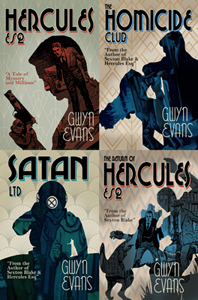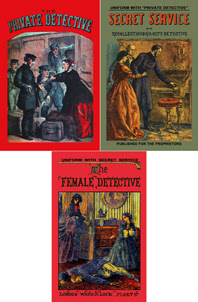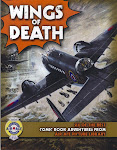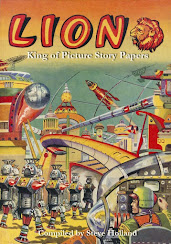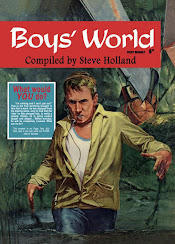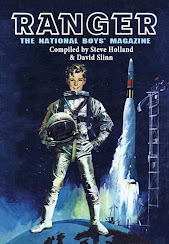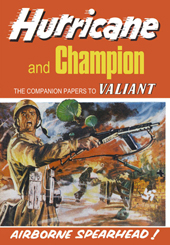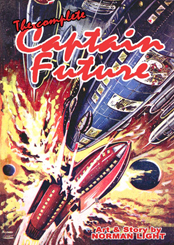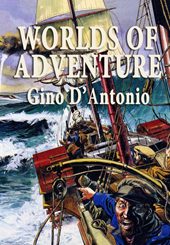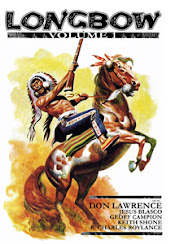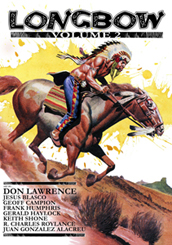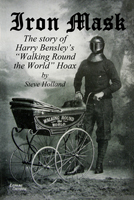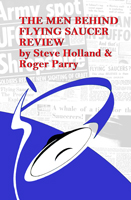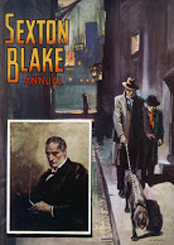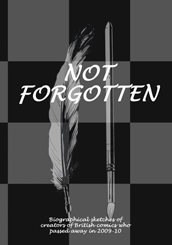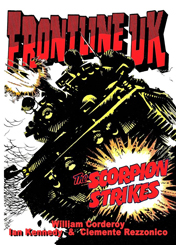Commando Issues on sale 30 June 2016.
Commando No 4927 – Survive The Somme
Private Joe Dugdale was one of many men thrust into the heart of a battle which would go on to be remembered as the most horrific of all time.
When the Battle of the Somme commenced in July 1916, no-one could have known it would drag on for five months and that there would be an eventual death toll of over one million.
Although Joe bravely faced the hell of the trenches every day, he was unaware that his Sergeant held a grudge and wanted rid of him for good.
It looked unlikely that Joe would SURVIVE THE SOMME
Story: Richard Davis
Art: Rezzonico
Cover: Ian Kennedy
Commando No 4928 – Phantom Frogmen
Corporal Stan Norton and Sergeant Ted Clark — Commandos, frogmen, mates.
But the ruthless Commando rule — if a man gets hurt, he gets left behind, whoever he is — looked like splitting them.
Ted was lying hurt in a well-guarded German army hospital. Stan was on his own in an enemy-occupied city.
But Stan said to blazes with the Commando rules. Ted was in there and he was just naturally going in to get him out.
Introduction
This is tough Special Forces story. A “men-on-a-mission” classic, it is superbly drawn by Rodrigo, especially when, naturally enough, the action goes underwater. His thick, dark inks really give the impression of the murky depths of the ocean and the eerie final resting place of a downed Lysander aircraft.
However, once we get back on to dry land we are straight into all-guns-blazing mode for a Commando tale that never lets up until the final page.—Scott Montgomery, Deputy Editor
Story: Redbridge
Art: Rodrigo
Cover: Segrelles
Phantom Frogmen, originally Commando No 233 (October 1966), re-issued as No 871 (September 1974)
Commando No 4929 – Biplane Alley
Tom Wills was desperate for adventure and wanted to be a pilot during World War II. Unfortunately, his flying skills were not up to scratch and he ended up as a clerk in the Pay Corps.
However, he seized upon the opportunity to join a ragtag group of flyers led by a maverick World War I veteran. Major Richard Joyce used ancient biplanes from the Great War to harass German and Italian forces in the North African desert. In their Gypsy Moth planes, armed only with long-fused bombs and Webley revolvers, Tom and his comrades literally went under the radar on these daring night raids against the enemy.
Story: David Heptonstall
Art: Keith Page
Cover: Keith Page
Commando No 4930 – Revenge Of The Shadow
The mysterious hooded figure hiding in the undergrowth was intent on vengeance — against S.S. Colonel Hans Meyer and his pack of “Wolves”.
He had already killed several of them silently and swiftly with his crossbow. Now if he could get inside the house, the evil leader of the wolf-pack would only have a few more moments to live…
Introduction
I do enjoy it when a Commando tale begins in one genre and swiftly changes tack. In this case, we appear to have a traditional air story featuring a couple of plucky Lancaster pilots but it immediately morphs into a taut Resistance piece set in occupied France.
Top class script, interior and cover work all come seamlessly together here for a memorable action story with a little bit of mystery thrown in too.—Scott Montgomery, Deputy Editor
Story: C.G. Walker
Art: Ibanez
Cover: Ian Kennedy
Revenge Of The Shadow, originally Commando No 1126 (May 1977), re-issued as No 2452 (March 1991)
Thursday, June 30, 2016
Wednesday, June 29, 2016
The Commando Interviews Part 9: Writing for Commando
Writing for Commando
By David Whitehead
For as long as I can remember, all I’ve ever wanted to do is write. And having read Commando since I was knee-high to the proverbial grasshopper, it will come as no surprise to discover that one of my earliest ambitions was to write for this wonderful war comic.
As a child, I used to turn out Commando stories for my own amusement, but it wasn’t until the late 1970s - and I was about twenty years of age - that I finally set about trying to turn my dream into reality.
I began by sending a letter to Commando’s editorial offices in Dundee, Scotland, in which I requested some writer’s guidelines. These arrived a few days later, together with an encouraging note from the editor, George Low.
The guidelines were fascinating. They gave a little background information on Commando itself, then offered some very practical do’s and don’ts for any potential contributor. For example: “The main character should be young and attractive, so that the reader will readily identify with him. He can be a tough type or a studious type, but he must be interesting.”
Potential stories needed action - obviously - but more than that they also needed some sort of emotional conflict between the main characters. “Conflict with the enemy,” noted the guidelines, “is frequently secondary to this.”
Stories usually ran for between 130-135 pictures, and the author had to describe each one for the benefit of the artist, as well as write every descriptive panel and bubble of dialogue. Naturally, played-out themes, such as the rescue of V.I.P.s from enemy-held territory, or boys meeting as rivals before the war only to oppose each other again in later life, as soldiers, were to be avoided.
Strong plots and well-drawn characters were the order of the day, then … but at that point, I was still a long way from being able to create either. Blissfully unaware of my shortcomings, I immediately hammered out and submitted no less than three feeble outlines, and though these were all rejected in no uncertain terms, one of them, entitled Ghost of a Chance, would later form the basis for my fourth published Commando, Hidden Helpers.
Over the years I had built up and disposed of about three major collections of Commando, only to start collecting them all over again when I realised just how much I missed them. By the early 1990s I was at it again, picking up the odd issue here and there, as and when I found them, but this time I resolved to build a complete set - something I had never managed to do before - and entertain no thoughts of ever parting with them again.
By now I had been a full-time writer for about eight years. I had written well over a hundred magazine articles and forty-odd books - mostly westerns, but a few romances as well. If you would like to know more about these - and here comes my one moment of shameless self-promotion - please check out my website
Inevitably, that old ambition of writing for Commando hit me again, and in the autumn of 1995 I once more contacted George Low. During the course of my research for a western called Blood Canyon, I had come across a fleeting reference to the contribution made by the Navajo Indians to America’s war effort, and I thought this would be a good starting-point for a yarn I called Warrior Breed. I sent George my synopsis, he liked it and asked to see the first thirty pictures in script form. This was to make sure I understood the correct way to set out an artist’s script, of course. After I produced the thirty pictures, he then told me to go ahead and write the remainder of the script. It was accepted on 10th November 1995 and eventually published as # 2966, Warrior Marines.
About a month later I was back with another story called Dive and Die, which focused on the dangerous work of the Royal Navy’s Underwater Working Party. Again, George liked it and told me to write the script, which was subsequently given the title Duel in the Deep (# 2985).
In January 1996 I submitted an outline called Fighting Mountie. I had been looking around for new or unusual concepts, and it suddenly struck me that, to the best of my recollection, Commando had never published a story featuring the Royal Canadian Mounted Police. This too was accepted, and published as # 2994, but my very next submission, The Guardian Angels, failed to impress. “It’s too predictable, and the supernatural events aren’t convincing enough for our readers,” George wrote in his rejection letter. “I will say, though, that the beginning of the story is intriguing, and I think you should look at the general idea again.”
I did just that, and in April 1996, the story - which revolves around a young Frenchman and the help he receives from three ghostly benefactors - was eventually issued as Hidden Helpers (# 3006). The following month I submitted Doctor’s Orders, which George found “different from any other story we have on the go at the moment, and an intriguing tale which we can use.” Again, I had searched around for another unusual premise, and decided that a story about the Royal Army Medical Corps might just fit the bill. George felt that the story needed expanding, however, and proceeded to offer a number of detailed suggestions, all of which improved the yarn no end.
And this, I think, is one of the things that make George Low such an exceptional editor. He understands perfectly what works and what doesn’t, and he can take a reasonable idea and make it immeasurably better by suggesting an additional twist here, or the introduction of a new character there.
He certainly knows his stuff, too. I remember one particular occasion when I submitted a story called Rescue Ship!, which was subsequently - and quite rightly - rejected. My plot called for a German admiral to return to Germany by U-Boat. But as George pointed out, any German officer of this rank making the journey I was proposing, would have been flown over neutral Sweden or taken by road down through occupied Denmark. Travel by U-Boat wouldn’t even have entered into it.
In any case, the script for Doctor’s Orders was written along the lines George had mentioned, and eventually came out as # 3030, The Getaway Gang.
By the summer of 1996 I had turned my attention to the Texas Rangers, and a story called The Ranger Breed. It began life as a simple story about some German POWs who escape en route to a holding camp in Texas, and the efforts of the Rangers to recapture them. Yet again, however, a not-bad story was elevated to new heights by George’s enthusiastic response. Adding a pair of nasty Nazis who had been sent to find out what the Americans were working on at Los Alamos, New Mexico, he gave the plot real depth, and it eventually saw print as # 3061, Behind American Lines.
By now I had six Commando's under my belt, but this was no guarantee of continued success. I came up with another story in August 1996 which was set in the days following the Normandy landings, and revolved around a German officer who decides to hunt down three escaped British POWs for sport. It was a pretty weak story, as George pointed out, but when I gave it some more thought, I realised that it would become considerably better if I introduced a hero who had was suffering from battle-fatigue. One of his comrades, who felt that he was the weak link who kept letting them down, would then gradually begin to understand what he was going through when his own fear of confined spaces suddenly reared its ugly head.
Confront and Conquer! - as it was called - was accepted in October 1996, but once again George showed his painstaking attention to detail. In one scene I’d had a Junkers 87 attacking British forces. George suggested that I change this to artillery fire. “The Junkers 87 smacks too much of the Dunkirk evacuation,” he wrote, “and not the invasion.” So artillery fire it became. This yarn was subsequently issued as # 3125, Face Up To Fear!
Even if a story was rejected, then, I could always go back to it at a later date and perhaps re-work it. In January 1997 I had an idea about an elite German squad who plan to steal the Crown Jewels, which were removed from the Tower of London during the War and taken to a secret location elsewhere for safekeeping (a location, incidentally, which remains top secret, even today). The idea was that the theft, should it succeed, would have a disastrous effect upon the morale of the nation. George felt that the basic plot was sound, but suggested that I transpose the action to Europe in 1945, and replace the Crown Jewels with some recovered Nazi loot, such as gold bullion.
I never did write the story in that form, but one evening in early 2000 I suddenly saw how I could give my elite German squad a different and altogether more unusual target. But you’ll have to read # 3385, Home-Front Hero, to find out exactly what that target was.
Incidentally, just checking through my files, I see that I submitted two versions of this script, because I really wasn’t satisfied with the first one I mailed in. “This is a first for us,” wrote an appreciative George, “and says a lot for your approach.”
In the summer of 1997 I wrote Commando’s first-ever Indian Wars story, Redman to the Rescue (published as # 3145, Blazing Frontier). I had long been interested in the Old West, of course, and in my opinion Commando had neglected the Indian Wars for too long. I was lucky in that the story was illustrated by Denis McLoughlin, who was himself fascinated by this period of history, and in 1975 compiled a superb reference book entitled The Encyclopedia of the Old West. In May 1997, Denis also drew my story The Santiago Secret, for which I employed another little-used conflict, the Spanish American War. This issue came out under the title Storm Island (# 3167).
I returned to the western setting with Rebel Raiders in October 1998, a story of the American Civil War, which again was one of those conflicts which had been all but ignored by Commando in the past. This story centred around a group of so-called “Galvanized Yankees” - Confederate prisoners-of-war who were given their freedom on condition that they go west and help restore law and order, and looking back on it, I realise that I had pretty good mileage out of this idea. A couple of years later I wrote something very similar as a full-length western called Apacheria. There was also a sequel, entitled Lockwood’s Law, and at the moment (March 2006) I’m about halfway through writing the next book in this series, Kane’s Quest.
My forays into Old West territory haven’t always been as successful, though. Sixgun Showdown centred around the theft of an army payroll, and was rejected - as indeed was another Civil War story called Remington’s Raiders, which dealt with the adventures of a special force of Negro troops.
The Civil War was to give me another two acceptances, though. In May 2000 I wrote # 3402, Camel Cavalry, a story that was inspired by the U S Army’s ill-fated attempt to replace horses with camels in the late 1850s. And the naval battles of the conflict inspired The Fighting Furies (# 3526) in June 2001.
My next Commando, Battle Boats (# 3178) came about after I watched a TV programme about the many strange superstitions of Britain’s fishermen. Being more than a little superstitious myself, I chose to give the Motor Torpedo Boat in the story the number 113 because that was the number of the house in which the script was written.
I stayed with the sea for 1998’s Powder Monkey (# 3246). This was a Napoleonic War story about two young lads, both bitter enemies, who enlist in the Navy to get away from each other. Unfortunately, they both end up aboard the same ship, and share an adventure which eventually makes them forget their differences. George liked the premise, but felt that the plot was too short and too simple. He then listed no less than eight detailed story-points to improve the yarn, and I wasted little time in incorporating these into a revised synopsis. It still wasn’t quite right, however - but once again George came to the rescue, and as soon as his additional ideas were added to the mix, it made for a cracking yarn.
In the summer of 1999 I was researching an article on Ancient Rome for Book and Magazine Collector when I discovered that, as its empire began to fragment sometime around 60 A.D., the Romans were forced to introduce compulsory military service in order to maintain an army of sufficient size. This gave me the basis for a Commando called Outlaw! (# 3346). The plot immediately appealed to George, who suggested a number of additional points to make it work even better, and the finished product was drawn by long-time Commando artist John Ridgway.
Another Commando, # 3552’s Fight to Win!, came about in the same way. I was writing an article on the French Foreign Legion when I happened across a reference to the lesser-known Spanish Foreign Legion. There was so little information then available about this particular fighting force that I could only turn up one reference book. However, it gave me a reasonable basis for a story, although my yarn was hardly original - in fact, I later saw something pretty similar to it in Jean-Claude Van Damme’s movie Legionnaire.
After reading Breakout, Martin Russ’s brilliant re-telling of the Korean War’s Chosin Reservoir Campaign, I came up with Dragons of War (# 3429) in June 2000. What really intrigued me about the story were the KATUSAs - Koreans Attached to the U.S. Army. I felt that I could really do something with these fellows. And in a way, this illustrates just where ideas come from. Fact is frequently stranger and more exciting than fiction, and though there has to be a certain degree of artistic license - “romanticising,” if you will - I believe that just about all of my stories have been based - at least in part - on real-life events.
The same applies to Pull Together!, a story about the Japanese invasion of Singapore, and the work of the so-called “Stay-Behind” parties whose job it was to literally stay behind and harass the enemy at every turn. This one eventually saw print as Sabotage Team (# 3456). And aside from its supernatural overtones, Ghost Fleet (which was published as # 3535’s Phantoms’ Vengeance) was inspired by the sterling work of the “Shetland Bus”.
Although I’ve never taken a rejection personally, I was disappointed when my story Like Father, Like Son was turned down in early 2002. George found it “built on too much of a coincidence” and the action too “ordinary”. But it had come to me in a most extraordinary way - in two separate dreams. The plot unfolded in the first, and the title came to me in the second.
In the July of that year, however, I was given the go-ahead and write the script for Jungle Cop (# 3656), which was set in 1953 Malaya, and told the story of one policeman’s war against Communist terrorists. Once again, a fair percentage of this story was taken from real-life events.
And so it goes on. In February 2003 I wrote a North-West Frontier story called Frontier Fury (# 3679). Next came Rescue Squad (# 3717), a World War II tale showcasing the U.S. Army’s fearsome Alamo Scouts. To date, my last published Commando was The Bamboo Vipers (# 3789), my first Vietnam-era yarn (but not, I hope, my last!). Backed up and awaiting publication now are Coward and Killer! and Ace High, Ace Low, both stories set in World War II Burma.
As for the future - well, I have a stack of ideas. My biggest problem is finding the time to write them all up. But keep watching this space - there are more yarns yet to be told … a lot more!
The above essay by David Whitehead was originally published by Michael Eriksson in March 2006 on his late and much lamented website Where Eagles Dare. It appears here with Mike's permission.
Monday, June 27, 2016
Donald Ryder Stephens (Donald Sinderby)
Donald Ryder Stephens was born in St. Albans, Hertfordshire, on 11 September 1898, the son of Martin Frank Stephens, a publisher's manager, and his wife Mary Ann (Annie) Beney. Stephens grew up in St Albans and Wimbledon. His parents subsequently moved to 2 Nevill Park, Tonbridge Wells, and, later still, to Bexhill. Stephens was an Old Tonbridgian, having attended Tonbridge School, and was a well-known member of the Tonbridge Rugby F.C.
After attending R. M. C. Sandhurst, he served in the Dorsetshire Regiment during the Great War achieving the rank of Lieutenant and, after the Armistice, is believed to have served in India.
After five years in the Army he began working in the Central Editorial Department of the Amalgamated Press in 1923-26. He also began writing for their children's papers, producing serials and short stories and was a staff writer on the Children's Newspaper.
He also began publishing stories in Hutchinson's Magazine and The Regent Magazine in 1924 using the pen-name Donald Sinderby, derived from a family name which was borne by his great-grandmother, who died in 1861.
His occupation was given as author when, in 1927, he married Audrey Margaret Elmslie (1901-1991), only daughter of Major and Mrs. Stuart Elmslie.
The Jewel of Malbar was described as "An exciting love story of unusual interest" as it portrayed the love, devotion and self-sacrifice of a beautiful native girl and her lover, British officer Sir John Bennville, who is infatuated with her. Its background is the Moplah Rebellion of 1921 in South-West India. The book was well-reviewed as a convincing and vivid account of the fierce fighting with many hair-breadth escapes which characterised the campaign in which the author was personally engaged from first to last.
Protagonists also centred on the passion of an army officer towards a beautiful native girl with an Indian setting. Dogsbody followed the sometimes whimsical adventures of a subaltern, Lieutenant "Dogsbody" Cottram, in an Indian regiment and his pet mongoose, Bertie. "Dogsbody", now married, reappeared in The Vagrant Lover, along with his brother, with whom he shares a pilgrimage to Canterbury, and his pompous parents-in-law. The reviewer for the Aberdeen Journal (4 April 1929) felt that "This is a laughter book and the reader who does not occasionally laugh outright on perusing its pages has no fun in his or her bones."
Mother-in-Law India reflected British apprehension that the Raj was nearing an end, with India cast as the music hall version of the troublesome mother-in-law at a time when great attention was focused on the future of the country. In Sinderby's novel, set twenty years in the future, various states fall under the control of two factions; in the north control is held by the Confederation of Princes and Landowners; and the south is seized by the Nizam of Hyderabad. Trouble develops between north and south threatening the country with a civil war which turns into an inter-caste conflict between Hindus and Mohammedans. The desolate and ravaged country is restored to order by the intervention of America, France and Portugal.
"Behind the explosions of battle runs the refrain cherchez la femme, the woman being Marietta, a beautiful Eurasian, who after dangerous vacillation manages to end up in respectable security on the right side, with the blood of half India on her head," revealed the reviewer for the Yorkshire Post (5 November 1930). "Mr. Sinderby evidently has a wide knowledge of his subject. His writing is full both of grim irony and passionate interest, and the horror of a considerable part of the picture is accentuated by the fact that it is quite within the bounds of possibility."
"In less skilful hands than Mr. Sinderby's such a book would border perilously upon the obscene," warned the Kent and Sussex Courier (28 November 1930), "but at least the author, who has lived most of his life in India, has travelled in every province and made a thorough and extensive study of Indian and Anglo-Indian problems, is a master of his subject. He has set out to portray faithfully and to the limit of his wife knowledge, all the dangers that lurk beneath the apparent guilelessness of the East, all the inborn fanaticisms which to his mind would find an outlet in the mighty revolution which he describes. He does not care to hide any of the revolting horrors from our Western senses. Wirtten as a novel, without a character to commend itself overmuch to our admiration, and with self always foremost in the minds of all whom he introduces into his story, Mr. Sinderby has obviously found little of beauty in his researches. This is indeed a book over which to ponder, and coming at the time when this country's problems are so acutely before us, it is a book which should claim attention."
The publisher for this final novel, Albert E. Marriott, was, in fact, co-owned by con-man Netley Lucas, then enjoying a brief literary career as a writer and publisher; by the time the reviews were appearing, Lucas and his partner had already left the country and the company was forced into bankruptcy by its creditors.
Whether Stephens received any money at all for this final endeavour is unknown, but he suddenly seems to disappear, with no further novels to his name.
Living at Cherry Hay, Hildenborough, Kent, Stephens and his wife had two daughters, Anthea W. M. Stephens (born on 17 November 1930) and Charmian R. L. Stephen (born in 1935, married Edward S. Goldwyn in 1960). Perhaps it was the birth of his daughter coinciding with the collapse of his last novel that persuaded him to find work elsewhere or, if he remained a writer, either anonymously or pseudonymously. His last known work appeared anonymously in Boys' World in the 1960s.
Stephens served for four years in Malta during World War Two.
He died in Tunbridge Wells, Kent, on 30 November 1983. Dogsbody and The Vagrant Lover were reprinted by Limited Edition Press of Southport in 1996 and 1999 respectively. A further two of his novels, Mother-in-Law India (2000) and The Jewel of Malabar (2003), were reprinted by Manchester-based Small Print by arrangement with one of Stephens' daughters.
PUBLICATIONS
Novels as Donald Sinderby
The Jewel of Malabar. A story of the Moplah rebellion in India, 1921. London, J. Murray, 1927.
The Protagonists. London, John Murray, 1928.
Dogsbody. The story of a romantic subaltern. London, Herbert Jenkins, 1928.
The Vagrant Lover. London, Herbert Jenkins, 1929.
Mother-in-law India. London, Albert E. Marriott, 1930.
After attending R. M. C. Sandhurst, he served in the Dorsetshire Regiment during the Great War achieving the rank of Lieutenant and, after the Armistice, is believed to have served in India.
After five years in the Army he began working in the Central Editorial Department of the Amalgamated Press in 1923-26. He also began writing for their children's papers, producing serials and short stories and was a staff writer on the Children's Newspaper.
He also began publishing stories in Hutchinson's Magazine and The Regent Magazine in 1924 using the pen-name Donald Sinderby, derived from a family name which was borne by his great-grandmother, who died in 1861.
His occupation was given as author when, in 1927, he married Audrey Margaret Elmslie (1901-1991), only daughter of Major and Mrs. Stuart Elmslie.
The Jewel of Malbar was described as "An exciting love story of unusual interest" as it portrayed the love, devotion and self-sacrifice of a beautiful native girl and her lover, British officer Sir John Bennville, who is infatuated with her. Its background is the Moplah Rebellion of 1921 in South-West India. The book was well-reviewed as a convincing and vivid account of the fierce fighting with many hair-breadth escapes which characterised the campaign in which the author was personally engaged from first to last.
Protagonists also centred on the passion of an army officer towards a beautiful native girl with an Indian setting. Dogsbody followed the sometimes whimsical adventures of a subaltern, Lieutenant "Dogsbody" Cottram, in an Indian regiment and his pet mongoose, Bertie. "Dogsbody", now married, reappeared in The Vagrant Lover, along with his brother, with whom he shares a pilgrimage to Canterbury, and his pompous parents-in-law. The reviewer for the Aberdeen Journal (4 April 1929) felt that "This is a laughter book and the reader who does not occasionally laugh outright on perusing its pages has no fun in his or her bones."
Mother-in-Law India reflected British apprehension that the Raj was nearing an end, with India cast as the music hall version of the troublesome mother-in-law at a time when great attention was focused on the future of the country. In Sinderby's novel, set twenty years in the future, various states fall under the control of two factions; in the north control is held by the Confederation of Princes and Landowners; and the south is seized by the Nizam of Hyderabad. Trouble develops between north and south threatening the country with a civil war which turns into an inter-caste conflict between Hindus and Mohammedans. The desolate and ravaged country is restored to order by the intervention of America, France and Portugal.
"Behind the explosions of battle runs the refrain cherchez la femme, the woman being Marietta, a beautiful Eurasian, who after dangerous vacillation manages to end up in respectable security on the right side, with the blood of half India on her head," revealed the reviewer for the Yorkshire Post (5 November 1930). "Mr. Sinderby evidently has a wide knowledge of his subject. His writing is full both of grim irony and passionate interest, and the horror of a considerable part of the picture is accentuated by the fact that it is quite within the bounds of possibility."
"In less skilful hands than Mr. Sinderby's such a book would border perilously upon the obscene," warned the Kent and Sussex Courier (28 November 1930), "but at least the author, who has lived most of his life in India, has travelled in every province and made a thorough and extensive study of Indian and Anglo-Indian problems, is a master of his subject. He has set out to portray faithfully and to the limit of his wife knowledge, all the dangers that lurk beneath the apparent guilelessness of the East, all the inborn fanaticisms which to his mind would find an outlet in the mighty revolution which he describes. He does not care to hide any of the revolting horrors from our Western senses. Wirtten as a novel, without a character to commend itself overmuch to our admiration, and with self always foremost in the minds of all whom he introduces into his story, Mr. Sinderby has obviously found little of beauty in his researches. This is indeed a book over which to ponder, and coming at the time when this country's problems are so acutely before us, it is a book which should claim attention."
The publisher for this final novel, Albert E. Marriott, was, in fact, co-owned by con-man Netley Lucas, then enjoying a brief literary career as a writer and publisher; by the time the reviews were appearing, Lucas and his partner had already left the country and the company was forced into bankruptcy by its creditors.
Whether Stephens received any money at all for this final endeavour is unknown, but he suddenly seems to disappear, with no further novels to his name.
Living at Cherry Hay, Hildenborough, Kent, Stephens and his wife had two daughters, Anthea W. M. Stephens (born on 17 November 1930) and Charmian R. L. Stephen (born in 1935, married Edward S. Goldwyn in 1960). Perhaps it was the birth of his daughter coinciding with the collapse of his last novel that persuaded him to find work elsewhere or, if he remained a writer, either anonymously or pseudonymously. His last known work appeared anonymously in Boys' World in the 1960s.
Stephens served for four years in Malta during World War Two.
He died in Tunbridge Wells, Kent, on 30 November 1983. Dogsbody and The Vagrant Lover were reprinted by Limited Edition Press of Southport in 1996 and 1999 respectively. A further two of his novels, Mother-in-Law India (2000) and The Jewel of Malabar (2003), were reprinted by Manchester-based Small Print by arrangement with one of Stephens' daughters.
PUBLICATIONS
Novels as Donald Sinderby
The Jewel of Malabar. A story of the Moplah rebellion in India, 1921. London, J. Murray, 1927.
The Protagonists. London, John Murray, 1928.
Dogsbody. The story of a romantic subaltern. London, Herbert Jenkins, 1928.
The Vagrant Lover. London, Herbert Jenkins, 1929.
Mother-in-law India. London, Albert E. Marriott, 1930.
Friday, June 24, 2016
Alan Mitchell (1960-2016)
On hearing of Mitchell's death, Mills said “I'm stunned. Alan was a fantastic writer and a great guy. He wrote some powerful and important political, hard hitting, and funny observations about modern life. I will miss him greatly.”
Born in Bethnal Green, one of five siblings, and raised in Stepney, Mitchell was assocated with the Webbe Institute who set up boys' clubs in Bethnal Green and other London boroughs. He was editor of the Webbe Youth Club Magazine.
He joined ACME Comics in Brixton in January 1987, and was working there as a shop manager when Pat Mills met him. At the time Mills was writing 'Third World War' for Crisis and, having written the first sixteen episodes himself, he was looking for a co-writer to bring social and political authenticity to the direction he was planning to take the story. Mitchell did more than add perspective: the character of Chief Inspector Ryan, who embodied racism in the police force, was based on a PE teacher Mitchell remembered from primary school: "A military man. Dark, tall, lean and muscular with an angular, hawk face. About thirty-five years old. A disciplinarian who loved to use the slipper and the cane. A brute whose name was Ryan."
Ryan was one of the most memorable characters to appear in the series, especially when depicted by John Hicklenton. "When we got the first image of Ryan (the image became the cover of the first Ryan story in Crisis) I was blown sideways by an utterly different take on what I had in mind," Mitchell later recalled. "But in Ryan's expression, in his eyes, on the mask of his face was all the innards and more of this monster writ large on the page.
"Pat and I knew we were onto something. We also knew that John was THE artist with the lense to project this most difficult of characters onto the screens of our subconscious."
With only a couple of short breaks, Mitchell co-wrote the rest of the series between April 1989 and December 1990, working with Carlos Ezquerra, Duncan Fegrado, Sean Phillips, Richard Piers Rayner, Glyn Dillon, Steve Pugh and Robert Blackwell.
"Pat is a great framer of narrative but he really let me have my head on this story. We were tapping deep into the well of my political and cultural psyche. We were journeying along the corridors of my perceptions of white tribalism. Of the underbelly of all that seething, twisted, self-righteous bile that you might call racism but I refer to as 'the dark other'."
Mitchell also penned 'Prisoner of Justice' for the Crisis Amnesty International special in 1990, with artwork by Glenn Fabry, and, again with Mills, co-wrote 'Coffin' for Toxic in 1991 with art by Morak Oguntade.
Mitchell had met artist Jonathan Akwue whilst working at ACME and the two eventually collaborated on a strip entitled 'Scrolls of Imhotep', published in an Africentric magazine called The Alarm in the mid-1990s.
He co-wrote the ABC Warriors novel The Medusa War with Pat Mills, published under their Black Flame imprint by Games Workshop in 2004.
Mitchell subsequently moved away from writing comics to concentrate on work involving working with young people. In October 2005, he began working as an intensive support personal adviser with West Sussex County Council, working with young people aged between 8-19 on anti-bullying, supporting older young people in care and working with young people in care, a position he remained in until 2014.
In 2009, he became the co-founder of Buzz Comics, an attempt to create an online comics community for creators of all ages where they could post artwork and receive feedback and encouragement. The website would include tutorials and online comics and was supported by local artists Warren Pleece and Glenn Fabry and writer Indra Shann. Buzz Comics made their public debut with an illustration workshop for local children at the Strange New Worlds one-day convention on 24 July 2010 in Worthing, an independent science fiction, cosplay and comics convention co-founded by Mitchell.
Shortly before, in August 2009, Tara Huckle, the two-year-old daughter of Buzz co-founder, Steve Huckle, was diagnosed with a brain tumour; she survived through surgery thanks to the medical care of Royal Alexandra Hospital in Brighton and Kings College Hospital in London. Huckle founded Buzz Press to publish stories to raise money and Alan Mitchell and Indra Shann were heavily involved in setting up a website to create a graphic novel entitled 'The Magic Toybox', seeking sponsorship to raise funds for the Royal Alexandra.
According to the website (now closed), the story was about a sad little boy whose parents are always arguing, a troop of living toys and a magical toy box that will sweep them away on a quest to find a new guardian for the Heart of Harmony, and a magnificent jewel that produces love in the right hands, but is a deadly weapon in the wrong ones. The toys have a race against time before nefarious villains Naarg and The Monkey King attempt to steal the heart for their own wicked purposes.
Buzz Press published at least two short books in 2011: Jac and the Pumpkin Soup by Indra Shann and The Wolf Meets the Rabbit and the Rabbit Meets the Wolf by Agathe Senior. The company was dissolved in 2014.
Mitchell continued to collaborate with Shann and the two had recently completed a novel for children. Rumplestiltskin was to be published in 2016 under the pen-name Joe Leonard with a cover by Glenn Fabry. The plot concerns a witch who wants to raise a demon out of hell, and the young girl—Miranda—and her husband and son who are caught up in the witch's plans to systematically destroy their world.
Based in Brighton, he retained his deep interest in superhero comics and films, posting regularly on those subjects and others on social media.
He was married to Christiana Joseph in 1990, although they subsequently separated. He had six children and had recently become a grandfather.
Comic Cuts - 24 June 2016
We've had something of a chaotic week, although that just seems to have made the day's fly past even faster than usual.
With the house to myself for part of the weekend (due to Mel having a family birthday to attend) I managed to finish watching Mr Robot which was OK despite the heavy debt it owed to Fight Club—ranging from the unreliable narrator with a guide who is promising to show him the real world who turns out to be imaginary to the basic premise of the plot's McGuffin: to destroy the records of a huge banking corporation to set debt levels back to zero. And the one potentially original character turned out not to be so original but a rip-off from American Psycho.
Replacing it was 11.22.63, based on the Stephen King novel about a time-traveller trying to stop the Kennedy assassination. Not the first novel about time-travel and the Kennedy assassination of course, as David Bishop's Doctor Who novel Who Killed Kennedy appeared twenty years earlier. I've read quite a few books on the subject from all sides, those who believe Oswald was part of a conspiracy to kill the president, others who believe he acted alone and yet others who think he was just a fall guy, carefully manipulated and positioned so that he could be walked out of a cinema into the waiting flashlights of journalists' cameras.
I have no idea which is true. I must admit I'd love to know. I was only eighteen months old, so the results of those gunshots have affected my whole life. We might have had a world with less war and more space exploration for all I know.
Anyway, my idealism aside, the King-based TV show has got off to a good start. The format is excellent with episodes varying in length as Hulu isn't the traditional TV channel which requires shows of precisely 43 minute episodes. An unfortunate side-effect of the many ad breaks in American shows is that all often lack time to develop characters, side-stories and back-stories. Sometimes a show will recognise this and just race from action scene to action scene (24 was maybe the ultimate example); but the advent of HBO's original programming and other form of pay-per-view (Netflix, Amazon Prime, Hulu) mean that shows don't have to be a specific length to accommodate adverts and a season can be short enough to tell a storyline without huge amounts of padding. (I'm suffering from padding overdose as I'm watching Arrow season three, which has been bulked out like a bodybuilder, with plots so stretched they look unnatural and grotesque.)
We've also just watched the first episode of Powers from something called the PlayStation Channel. I loved the comic and the TV show started well, with the caveat of a bit of wooden acting from some of the players and the somewhat cheap look to the show. I'm sure it cost a fortune to shoot, but we've been spoiled for too many years by American shows that cost the same per episode what a British TV show would spend on a whole series.
I love the format of these eight / ten / thirteen episode shows because they can do justice to a novel. One of the best shows from last year was The Man In The High Castle and I can imagine a lot of classic SF novels could make superb series. They're already doing a modern space opera in The Expanse, but I'd love to see something older... I know Gateway is being filmed, for instance and Dan Simmons' Hyperion and Kim Stanley Robinson's Red Mars are in development. And another spin on the Nazi's winning WW2 is also filming in the shape of Len Deighton's SS-GB. But I'd love to see Ringworld done as a mini-series—it was on the cards a couple of years ago and may still be in development.
I'd better finish up now. I'm writing this early evening on Thursday, it's pissing down with rain and we still have to go out and vote. Then it's Referendum Fish & Chips—which is the only thing we've been looking forward to during the whole ghastly back-stabbing debacle that has taken over from reasoned debate these past few months. Racism and xenophobia is being normalised again: that's the country I grew up in during the 1960s and 1970s and it's something I'd hoped we'd left behind as we grew into a more multicultural society. People have such short memories.
Random scans this week.... I picked up a book by John Burke last weekend, which prompted me to dig out some old scans of his very early science fiction novels, published as by Jonathan Burke by Hamilton & Co. / Panther Books in the early 1950s. I don't have them all, so a couple of the scans below are not up to my usual scratch, but they make an interesting and diverse little gallery. You'll find them if you scroll down.
The bulk of the covers are by John Richards, who has been mentioned here on Bear Alley more than once. You can find our more about him here.
Posts might be a little more patchy over the next few weeks as I'm going to be back on the Hotel Business treadmill, but I have a few odds and ends lined up that I'll post as and when I get a chance to finish them.
With the house to myself for part of the weekend (due to Mel having a family birthday to attend) I managed to finish watching Mr Robot which was OK despite the heavy debt it owed to Fight Club—ranging from the unreliable narrator with a guide who is promising to show him the real world who turns out to be imaginary to the basic premise of the plot's McGuffin: to destroy the records of a huge banking corporation to set debt levels back to zero. And the one potentially original character turned out not to be so original but a rip-off from American Psycho.
Replacing it was 11.22.63, based on the Stephen King novel about a time-traveller trying to stop the Kennedy assassination. Not the first novel about time-travel and the Kennedy assassination of course, as David Bishop's Doctor Who novel Who Killed Kennedy appeared twenty years earlier. I've read quite a few books on the subject from all sides, those who believe Oswald was part of a conspiracy to kill the president, others who believe he acted alone and yet others who think he was just a fall guy, carefully manipulated and positioned so that he could be walked out of a cinema into the waiting flashlights of journalists' cameras.
I have no idea which is true. I must admit I'd love to know. I was only eighteen months old, so the results of those gunshots have affected my whole life. We might have had a world with less war and more space exploration for all I know.
Anyway, my idealism aside, the King-based TV show has got off to a good start. The format is excellent with episodes varying in length as Hulu isn't the traditional TV channel which requires shows of precisely 43 minute episodes. An unfortunate side-effect of the many ad breaks in American shows is that all often lack time to develop characters, side-stories and back-stories. Sometimes a show will recognise this and just race from action scene to action scene (24 was maybe the ultimate example); but the advent of HBO's original programming and other form of pay-per-view (Netflix, Amazon Prime, Hulu) mean that shows don't have to be a specific length to accommodate adverts and a season can be short enough to tell a storyline without huge amounts of padding. (I'm suffering from padding overdose as I'm watching Arrow season three, which has been bulked out like a bodybuilder, with plots so stretched they look unnatural and grotesque.)
We've also just watched the first episode of Powers from something called the PlayStation Channel. I loved the comic and the TV show started well, with the caveat of a bit of wooden acting from some of the players and the somewhat cheap look to the show. I'm sure it cost a fortune to shoot, but we've been spoiled for too many years by American shows that cost the same per episode what a British TV show would spend on a whole series.
I love the format of these eight / ten / thirteen episode shows because they can do justice to a novel. One of the best shows from last year was The Man In The High Castle and I can imagine a lot of classic SF novels could make superb series. They're already doing a modern space opera in The Expanse, but I'd love to see something older... I know Gateway is being filmed, for instance and Dan Simmons' Hyperion and Kim Stanley Robinson's Red Mars are in development. And another spin on the Nazi's winning WW2 is also filming in the shape of Len Deighton's SS-GB. But I'd love to see Ringworld done as a mini-series—it was on the cards a couple of years ago and may still be in development.
I'd better finish up now. I'm writing this early evening on Thursday, it's pissing down with rain and we still have to go out and vote. Then it's Referendum Fish & Chips—which is the only thing we've been looking forward to during the whole ghastly back-stabbing debacle that has taken over from reasoned debate these past few months. Racism and xenophobia is being normalised again: that's the country I grew up in during the 1960s and 1970s and it's something I'd hoped we'd left behind as we grew into a more multicultural society. People have such short memories.
Random scans this week.... I picked up a book by John Burke last weekend, which prompted me to dig out some old scans of his very early science fiction novels, published as by Jonathan Burke by Hamilton & Co. / Panther Books in the early 1950s. I don't have them all, so a couple of the scans below are not up to my usual scratch, but they make an interesting and diverse little gallery. You'll find them if you scroll down.
The bulk of the covers are by John Richards, who has been mentioned here on Bear Alley more than once. You can find our more about him here.
Posts might be a little more patchy over the next few weeks as I'm going to be back on the Hotel Business treadmill, but I have a few odds and ends lined up that I'll post as and when I get a chance to finish them.
Jonathan Burke cover gallery
Dark Gateway
Panther Books 94, (Nov) 1953, 223pp, 2/-. Cover by John Richards
The Echoing Worlds
Panther Books 103, (Feb) 1954, 159pp, 1/6. Cover by John Richards
Twilight of Reason
Panther Books 118, (Mar) 1954, 159pp, 1/6. Cover by John Richards
Hotel Cosmos
Panther Books 135, 1954 (Jan 1955), 142pp, 1/6. Cover by John Richards
Deep Freeze
Panther Books 182, (Feb) 1955, 144pp, 1/6. Cover by Ron Turner
Revolt of the Humans
Panther Books 192, (Mar) 1955, 141pp, 1/6. Cover by John Richards
Panther Books 94, (Nov) 1953, 223pp, 2/-. Cover by John Richards
The Echoing Worlds
Panther Books 103, (Feb) 1954, 159pp, 1/6. Cover by John Richards
Twilight of Reason
Panther Books 118, (Mar) 1954, 159pp, 1/6. Cover by John Richards
Hotel Cosmos
Panther Books 135, 1954 (Jan 1955), 142pp, 1/6. Cover by John Richards
Deep Freeze
Panther Books 182, (Feb) 1955, 144pp, 1/6. Cover by Ron Turner
Revolt of the Humans
Panther Books 192, (Mar) 1955, 141pp, 1/6. Cover by John Richards
Wednesday, June 22, 2016
Perry's Picture Post part 20: The Epilogue
What do you suppose the connection between 'Chap O’Keefe' and Brian Woodford is . . . a bit unfair of me as you could not possibly have known . . . but I thought I’d ask anyway? It transpires that Chap O’Keefe &ndash or Keith Chapman, to give him his real name – upped and emigrated to New Zealand in 1966; and at virtually the same time, Brian Woodford thumbed a lift and took a slow boat . . . no, not to China but to Toronto, Canada.
Do I hear cries of “So what?”
In the Comments that followed “Perry’s Picture Post – part 10”, Keith posted the following comment:
Roger, I'm enjoying your memoirs at Bear Alley hugely, not least because I've always wondered what I did actually miss by quitting Odhams Books for NZ's greener pastures. When the Hamlyn "rationalization" of IPC's book interests reared its ugly head circa 1966, I trembled at the thought of a daily commute to Feltham from Bishop's Stortford. Amazing that although I don't think I ever met you during those turbulent times, many of the situations, methods and people you describe so colourfully bring back old memories with renewed clarity. In this episode, we have the Heath Robinson-like Grant (often referred to as the epidiascope in offices where I worked) ... not to mention former colleagues like the quietly affable Brian Cullen, who had been George Beal's art editor during my time putting together annuals at Odhams above Covent Garden tube, and the calmly competent Tessa Bridger, who had looked after the romance and schoolgirls' picture libraries for Micron in Wallington and Mitcham while I had done similar for its war, western and detective series.I was particularly intrigued to learn that Keith had been an editor on Fleetway's annuals and had daily worked at offices only some 200-yards from 96 Long Acre.
For those who have read my ramblings before, you will probably be aware that 96 Long Acre was where Juvenile Publications (i.e. Eagle, Girl, Swift, Robin and Boys’ World) had gone to during November 1963 having been transferred from the Hulton House annex – their home for the previous two years. It was while there that I had got to know Brian Woodford rather better due to the fact that our offices were next door to each other.
You might also recall that in part Eight, I spoke of Brian Cullen and Ron Morley as having worked under the guidance of George Beal in these same offices above Covent Garden Underground Station. But in his brief comment, Keith has already given me valuable information that I hadn’t known before: that sub-editor Tessa Bridger had been employed in a building so close to 96 Long Acre that we might have passed each other in the street during the time I worked on Girl.
I am ashamed to admit that I have said very little about Tessa, for although I knew her while I was employed at Hamlyn Books, my closer contact with the editorial section had been with Chris Spencer rather than Tessa. However, in 1974 – following Purnell Books' move to Berkshire House, Queen Street, Maidenhead – for reasons not explained to me, part of the first floor level where Purnell Books was based was also occupied by a sister company called International Book Publishers (IBP) – a packaging company headed by Mike Morris, where Tessa Bridger was employed as Chief Sub Editor.
In 1978, Tessa took her leave of IBP and, having taken up residence in offices further up Queen Street, had begun her own packaging company whose name had something to do with cats. . . although the exact name escapes me at this present time (Feline?).
In part 17, I spoke of the Bologna Children’s Book Fair, but what I hadn’t explained was the fact that between 1976 and 1979 (inclusive), I had driven out to Bologna roughly one week before the fair was due to open so that I might prepare the pre-booked area in readiness for those staff who hoped to sell the foreign rights of our range of books from an individually-designed exhibition stand.
Prior to my driving out there in 1979, Tessa had made two requests – the first that I transport the books she wanted to exhibit and sell the rights to out there; and the second to take with me her gopher and assistant Andy (?) as an unpaid passenger– a likeable lad of about 20 who was several inches taller than me, wore thick-lensed John Lennon glasses and had bleached and permed his hair into a frizz that went every-which-way. He had also, to my horror, spent £400 on beer while holidaying on the Isle of Wight.
For that year, my creation had been a dark and lusciously salubrious affair with a false black gauze ceiling; floor-to-ceiling chocolate-brown Hessian drapes upon which were hung eighteen pieces of finished artwork and eighteen miniature spotlights that highlighted the art – the result looked like a million dollars. By contrast, the stand next to Purnell Books had been one operated by World Distributors Ltd. and on the fair’s opening day, Michael Thomas had popped his head round so that he could claim: “I got my silver stand at last!” The reason for him saying this was that, while still working at Purnell Books, Mike had repeatedly requested that I design a silver stand . . . something that I had ignored as I knew the results would have all the charm of a tart’s boudoir wrapped in Bacofoil! Interestingly, there were always more visitors to the Purnell Books' stand than to the one run by WDL with glowing congratulations being regularly offered to Charles Harvey by those who visited.
In a way, Michael Thomas was a round peg in a square hole as he had really set his heart on being a Sandhurst Army Officer. But his dreams had been dashed when, following an accident while playing Rugby, he'd had his spleen removed—and with no spleen, you cannot combat the effects of diseases such as Yellow Fever, so an army career was out.
For those of you who are unaware as to who Brian Woodford is, not only is Brian spoken of extensively in Steve Holland’s history of Boys’ World comic (as he was instrumental in producing Boys’ World for almost its entire run) but much of his background can be gleaned by visiting Eagle Daze Part Seven, where he contributes much to the unfolding story.
Brian Woodford immigrated first to Canada in January 1967 and then a number of years later to Salt Lake City, Utah. Having kept in touch, he sent this email in April 2016:
Roger. I am receipt of pieces you are currently writing for Down the Tubes. Much of this is beyond my involvement there but I do find it somewhat interesting. My last working days in the UK were in December 1966 and you may remember I shared an office with you and Bob Prior. From that point, the happening in comics and such became a mystery to me since I was thousands of miles away by that time. With this big knowledge gap it has always been somewhat puzzling to me as to how the comics fell into nothing. TV21 seemed to be doing well...TV21 books also, and new titles coming from Odhams and Fleetway left me leaving the UK thinking all was well. It was only after working back there for three months in 1973 (on Sandie) that I got a sense of decline. How it happened, the process and such, what happened to all the people I knew is still a mystery to me. So your piece adds a few bits and pieces to fill in.And this brings me onto something that perhaps I ought to have spoken of earlier – the overall character of artists and the type of illustration they enjoy doing the most.
Your photos have included shots of Bob Prior and Howard Elson. While the shot of Howard is as he is today, I most certainly would not have recognized him. The Bob Prior shots are closer to the time I last saw him but yet he looks nothing like the Bob Prior I knew. He is thinner and long haired so perhaps that is the big change as I recall him somewhat chunkier with very short hair and a kind of short double quiff in the front. Even the picture of Alan Fennell you included does not look like him...far less hair, of course. The pics of Dennis and Todd Sullivan look pretty much as I remember them. Hey ho, the passing of years and our memories eh? Glad I still look exactly the same as I did back them.
Jon Davis was a giant of a man . . . six-foot-something in his socks; not fat but certainly ‘heavy’ and someone of a kind and mild disposition. He enjoyed illustrating elves, goblins and airy-fairy wisps in a dingily-dell environment. Also represented by Linden Artists were Elphin Lloyd-Jones and his wife Kate who, in direct contrast to Jon (although they too carried out dingily-dell illustrations of the Mrs Titmouse-type stories) were themselves both quite tiny people – not dwarves but stood certainly no higher that five-foot-one or five-foot-two. They lived in Hounslow, right under the flight-path of Heathrow Airport, and when an aircraft passed overhead, Elphin and Kate automatically ceased talking (even in mid-sentence) and only carried on with the story when the decibels were at a low enough level for them to be heard.
When Bill Titcombe visited our offices, his attire of mid-blue shirt, sparkling white collar and a smart charcoal suit generally put us all to shame. With what he wore, he could easily have joined in one of the Queen’s Garden Parties with his head held high.
There are, of course, always exceptions to every rule, but when you think of Don Harley, Frank Bellamy, Eric Eden, Keith Watson, Ron Turner and a host of others who illustrated the likes of Dan Dare, The Hulk, Superman and other equally similar dynamic characters, where these artists themselves were fairly small in stature, mild-mannered, and generally wouldn’t say boo to a goose! It was as though they were placing themselves into a light where they couldn’t possibly be in real life. In the Eagle strip “Frazer of Africa”, Frank Bellamy illustrated himself as the lead character in the series. One of his greatest desire was to go on safari . . . but he confided to me that he had never plucked up the courage to go.
Roger Perry
The Philippines
Monday, June 20, 2016
Perry's Picture Post part 19
Whatever the reason, rumour had it that Maxwell’s latest whim was to move the entire staff of Purnell Books back to London again – this time into a multi-story building that he’d renamed Maxwell House. The block was situated at the back of Liverpool Street Railway Terminal.
For four years, I had enjoyed the serenity of living in Somerset and there was no way that, apart from the occasional visit, I would entertain the idea of heading back in that direction again . . . so for the third time in my career, I had opted for redundancy. Many of my co-workers felt much the same way and I believe that, with no staff to speak of, Purnell Books all but ceased to exist.
I’d been with Purnell Books for nigh-on eleven years – with most of them having been great years. But as I have already said, many of those with whom I had enjoyed working were now gone – some had left, some had died – and for this reason, gone, too, was the fun of working there; and yet, there was nowhere else within the world of publishing where I would rather be. If I was honest, I wanted to create as much space as possible between certain individuals and me.
In the lead-up to the intended move, Mike Gabb – who seemed certain I would be tagging along to London like a meek lamb being led to the slaughter – had sat with one of Maxwell’s Savile-Row-suited bright-boys and – like a well-rehearsed part in a second-rate play – outlined the advantages of moving back to the capital.
When the inevitable question was finally asked, it was to Mike Gabb's utter surprise that I’d said I wasn't going back to London; his face was a vision that I shall remember to my dying day. The next horror for Gabb and bright boy was when they worked out what my severance pay would be. They had assumed that I was on a one month’s notice period, but this wasn’t so: after having been with Purnell for a couple of years, former boss Charles Harvey had amended the contract to six months notice.
At the end of the day Gabb (and his wife) hadn’t gone to London either. The last I heard, he was running Ladybird Books. I wonder if Let's Make Bombs and The Ladybird Book of Hallucinogenic Drugs were amongst Gabb’s ideas?
I don’t intend to speak too much about Robert Maxwell, particularly as there are many sources of information that can easily be accessed via Google. As you may remember, on 5 November 1991, Maxwell – having had his last contact with various members of the crew of the Lady Ghislaine – was found to be missing and it was presumed that he had fallen overboard. It has also been suggested (by Tom Bower in Maxwell: The Final Verdict) that he was probably relieving himself prior to taking a tumble.
The official ruling at a Madrid inquest was that death had been caused by a heart attack combined with accidental drowning (although I thought I read somewhere that the post mortem had revealed that there was no sea water in his lungs. Three pathologists had been unable to agree on the actual cause but murder was ruled out by the judge. However, having said that, have a think about the following list of atrocities that have come to light since:
(a) Without adequate prior authorisation, Maxwell had used hundreds of millions of pounds from his companies’ pension funds to shore up the shares of the Mirror Group to same his companies from bankruptcy. Figures are vague but numbers between £400 million and £700 million have been mentioned (see, for instance, Pension Schemes and Pension Funds in the United Kingdom by David Blake, p.340 et seq.).
(b) It was stated that the Mirror Group Newspapers plc reported a loss of $727·5 million for 1991, disclosing just how badly it had been damaged by Robert Maxwell – its previous controlling shareholder.
(c) Maxwell was under investigation for alleged war crimes at the time of his death. The Metropolitan Police file was released to The Independent under the Freedom of Information Act and shows that detectives were preparing a case for the Crown Prosecution Service.
The incident is said to have taken place in April 1945 when Maxwell’s platoon was trying to capture a German town and by his own admission to biographical author Joe Haines, Maxwell said that he shot dead the town’s mayor. Maxwell was aware that he was under investigation and it was speculated that due to this, he might have committed suicide. However, Tom Bower, in his unauthorised book, has said that this was fanciful as Maxwell had never shown any remorse or regret towards the plight of others.
(d) In a book written by Geoffrey Goodman called From Bevan to Blair: 50 Years’ Reporting from the Political Front Line, Goodman says the possibility that Maxwell could have ended up in the Old Bailey on charges of criminal fraud raised critical questions for a number of countries and was not a prospect that the US, Britain, Soviet Russia, Israel and France would have appreciated . . . the intelligence services in all of these countries were aware of the possible dangers ahead.
(e) Reporting in the Mirror under the heading "British Publisher Robert Maxwell Was Mossad Spy" on 12th June 2002, Gordon Thomas and Martin Dillon revealed that Maxwell had worked as a secret super spy for Mossad for the previous six years. In the article (supported by documents including FBI reports and secret intelligence files from behind the Iron Curtain), it says that Maxwell had threatened his wife, threatened his children, threatened staff of the Mirror, and, finally, that he issued one threat too many – for he had threatened Mossad. He told them that unless they gave him £400million to save his crumbling empire, he would expose all he had done for them.
Oh boy, let’s change the subject.
My plan upon leaving Purnell Books was to set up a small public relations and advertising business and be self-employed. I’d said all my working life that this was something I would never do, but with eleven years service with Purnell together with the six month notice of termination which Charles Harvey had set up for me, it meant that I'd received a lump sum of 17-months money.
The commissions from Wil had continued. I don’t really have a great deal to say about them apart from picking five out from the dozens and dozens I put together over the years and offering you just a morsel or two to chew over.
While working for Purnell Books, I’d had the pleasure of commissioning a variety of art pieces from Edgar Hodges, and during those times when he came down from his home-town of Bolton – a place where he had lived for virtually all of his life – Jenny and I would put him up in one of our spare bedrooms for a few days. But there's always a catch, and for Edgar it was that he had to play the character of miserly Tim Baker in a story called "The Phantoms of Fenwick Street".
In Part Fifteen, you might recall that I spoke of Clive Spong having become involved in the Rev. W Awdry’s books about Thomas the Tank Engine, and it would appear (should you wish to visit the Sodor Island website) that Edgar, too, contributed much to this revitalised and very popular The Railway Series.
One other story that had continued in Suzy for a total of nine weeks had been called "The Nightingales of Nile Street" and, due to its hospital setting, I had been lucky enough to use the facilities of the Mendip Hospital.
Now this might sound a bit grand and highfalutin', but I need to point out that, when it had first been opened in 1848, this complex was originally named the County Asylum for Pauper Lunatics. In 1880 they changed its name to Somerset and Bath Asylum, and then in 1940, it became known as Somerset and Bath Mental Hospital (Wells).
As a teenager, I recall being told by my mother that someone could be committed to an institution for some of the strangest reasons, and the list I recently found goes a long way to confirm all that she said (though why she should have known about this was never explained). Some, I totally agree with: Novel Reading, Egotism and Falling From a Horse in War are, I feel, quite justifiable reasons for locking someone away for years on end and throwing away the key.
Mendip Hospital was, in fact, in the throes of closing down (which it finally did in 1991), and whether there were any inmates there during the time I was making use of it, I really cannot say although there were some staff in situ – Nurse Jane Wong had certainly worked there as had one or two of the other extras I temporarily employed.
I had been given clearance to draw upon the facilities by the Administrator, who had, in fact, also played the part of the Administrator in the story – he hadn’t been difficult to persuade as his daughter had been given the leading roll of Nurse Jemima Dale for which she earned herself quite a lot of pocket-money.
I was never given any guidance as to how much I should pay my models, but felt that the fairest way was to pay them £1 for each scene in which they appeared.
For that £1, they really didn’t have to do all that much. Guided by the script, I would tell them what they were allegedly saying in each frame, and make sure they were positioned correctly. I mention this because if character A is seen speaking first and character B second, then A needed to be on the left-hand side of the picture and B on the right or there would be a cats’ cradle of speech-balloon tails. It was just a question of thinking ahead prior to pressing the shutter release button.
One story – "The Fairlady Fortune" that appeared over eight issues in Suzy during July and August 1984 – revolved around a girl named Jane Fairlady who had lost her memory through a horrific crash that had killed both her parents.
The photography for some of these lengthier stories could go on for several weekends as I also had a full-time job to attend to. I was about half-way through this story and was driving the girl back home having spent a couple of hours at the Wookey Hole Riding Stables. When I spoke to her, she had completely ignored me, and this had happened several times beforehand. Having safely returned Jane Fairlady back to her mother, I tentatively asked whether something was amiss with her daughter.
In Cathy of Curls & Co. I borrowed a fairly small hair-dressing salon that was tucked away above some shop in the High Street and was only accessible by its own flight of stairs.
Sometimes the planning of these sessions didn’t go quite as well it should have and I’d probably forgotten to book an actor for a part that only appeared one time over the nine-weekly episodes. I’d had two girls with me playing Cathy and Kay and, as only Cathy was in the shot, I handed the camera over to Kay and stood in for the missing actor.
And with that, I shall take my leave of you!
Roger Perry
The Philippines
(* Two of the Ladybird Books pictured above are parody titles. Let's Make Bombs © Richard Littler, created for his Scarfolk Council website. Not sure where Hallucinogenic Drugs first appeared, but the cover was found here.)
For four years, I had enjoyed the serenity of living in Somerset and there was no way that, apart from the occasional visit, I would entertain the idea of heading back in that direction again . . . so for the third time in my career, I had opted for redundancy. Many of my co-workers felt much the same way and I believe that, with no staff to speak of, Purnell Books all but ceased to exist.
I’d been with Purnell Books for nigh-on eleven years – with most of them having been great years. But as I have already said, many of those with whom I had enjoyed working were now gone – some had left, some had died – and for this reason, gone, too, was the fun of working there; and yet, there was nowhere else within the world of publishing where I would rather be. If I was honest, I wanted to create as much space as possible between certain individuals and me.
In the lead-up to the intended move, Mike Gabb – who seemed certain I would be tagging along to London like a meek lamb being led to the slaughter – had sat with one of Maxwell’s Savile-Row-suited bright-boys and – like a well-rehearsed part in a second-rate play – outlined the advantages of moving back to the capital.
When the inevitable question was finally asked, it was to Mike Gabb's utter surprise that I’d said I wasn't going back to London; his face was a vision that I shall remember to my dying day. The next horror for Gabb and bright boy was when they worked out what my severance pay would be. They had assumed that I was on a one month’s notice period, but this wasn’t so: after having been with Purnell for a couple of years, former boss Charles Harvey had amended the contract to six months notice.
At the end of the day Gabb (and his wife) hadn’t gone to London either. The last I heard, he was running Ladybird Books. I wonder if Let's Make Bombs and The Ladybird Book of Hallucinogenic Drugs were amongst Gabb’s ideas?
I don’t intend to speak too much about Robert Maxwell, particularly as there are many sources of information that can easily be accessed via Google. As you may remember, on 5 November 1991, Maxwell – having had his last contact with various members of the crew of the Lady Ghislaine – was found to be missing and it was presumed that he had fallen overboard. It has also been suggested (by Tom Bower in Maxwell: The Final Verdict) that he was probably relieving himself prior to taking a tumble.
The official ruling at a Madrid inquest was that death had been caused by a heart attack combined with accidental drowning (although I thought I read somewhere that the post mortem had revealed that there was no sea water in his lungs. Three pathologists had been unable to agree on the actual cause but murder was ruled out by the judge. However, having said that, have a think about the following list of atrocities that have come to light since:
(a) Without adequate prior authorisation, Maxwell had used hundreds of millions of pounds from his companies’ pension funds to shore up the shares of the Mirror Group to same his companies from bankruptcy. Figures are vague but numbers between £400 million and £700 million have been mentioned (see, for instance, Pension Schemes and Pension Funds in the United Kingdom by David Blake, p.340 et seq.).
(b) It was stated that the Mirror Group Newspapers plc reported a loss of $727·5 million for 1991, disclosing just how badly it had been damaged by Robert Maxwell – its previous controlling shareholder.
(c) Maxwell was under investigation for alleged war crimes at the time of his death. The Metropolitan Police file was released to The Independent under the Freedom of Information Act and shows that detectives were preparing a case for the Crown Prosecution Service.
The incident is said to have taken place in April 1945 when Maxwell’s platoon was trying to capture a German town and by his own admission to biographical author Joe Haines, Maxwell said that he shot dead the town’s mayor. Maxwell was aware that he was under investigation and it was speculated that due to this, he might have committed suicide. However, Tom Bower, in his unauthorised book, has said that this was fanciful as Maxwell had never shown any remorse or regret towards the plight of others.
(d) In a book written by Geoffrey Goodman called From Bevan to Blair: 50 Years’ Reporting from the Political Front Line, Goodman says the possibility that Maxwell could have ended up in the Old Bailey on charges of criminal fraud raised critical questions for a number of countries and was not a prospect that the US, Britain, Soviet Russia, Israel and France would have appreciated . . . the intelligence services in all of these countries were aware of the possible dangers ahead.
(e) Reporting in the Mirror under the heading "British Publisher Robert Maxwell Was Mossad Spy" on 12th June 2002, Gordon Thomas and Martin Dillon revealed that Maxwell had worked as a secret super spy for Mossad for the previous six years. In the article (supported by documents including FBI reports and secret intelligence files from behind the Iron Curtain), it says that Maxwell had threatened his wife, threatened his children, threatened staff of the Mirror, and, finally, that he issued one threat too many – for he had threatened Mossad. He told them that unless they gave him £400million to save his crumbling empire, he would expose all he had done for them.
Oh boy, let’s change the subject.
My plan upon leaving Purnell Books was to set up a small public relations and advertising business and be self-employed. I’d said all my working life that this was something I would never do, but with eleven years service with Purnell together with the six month notice of termination which Charles Harvey had set up for me, it meant that I'd received a lump sum of 17-months money.
The commissions from Wil had continued. I don’t really have a great deal to say about them apart from picking five out from the dozens and dozens I put together over the years and offering you just a morsel or two to chew over.
While working for Purnell Books, I’d had the pleasure of commissioning a variety of art pieces from Edgar Hodges, and during those times when he came down from his home-town of Bolton – a place where he had lived for virtually all of his life – Jenny and I would put him up in one of our spare bedrooms for a few days. But there's always a catch, and for Edgar it was that he had to play the character of miserly Tim Baker in a story called "The Phantoms of Fenwick Street".
In Part Fifteen, you might recall that I spoke of Clive Spong having become involved in the Rev. W Awdry’s books about Thomas the Tank Engine, and it would appear (should you wish to visit the Sodor Island website) that Edgar, too, contributed much to this revitalised and very popular The Railway Series.
One other story that had continued in Suzy for a total of nine weeks had been called "The Nightingales of Nile Street" and, due to its hospital setting, I had been lucky enough to use the facilities of the Mendip Hospital.
Now this might sound a bit grand and highfalutin', but I need to point out that, when it had first been opened in 1848, this complex was originally named the County Asylum for Pauper Lunatics. In 1880 they changed its name to Somerset and Bath Asylum, and then in 1940, it became known as Somerset and Bath Mental Hospital (Wells).
As a teenager, I recall being told by my mother that someone could be committed to an institution for some of the strangest reasons, and the list I recently found goes a long way to confirm all that she said (though why she should have known about this was never explained). Some, I totally agree with: Novel Reading, Egotism and Falling From a Horse in War are, I feel, quite justifiable reasons for locking someone away for years on end and throwing away the key.
Mendip Hospital was, in fact, in the throes of closing down (which it finally did in 1991), and whether there were any inmates there during the time I was making use of it, I really cannot say although there were some staff in situ – Nurse Jane Wong had certainly worked there as had one or two of the other extras I temporarily employed.
I had been given clearance to draw upon the facilities by the Administrator, who had, in fact, also played the part of the Administrator in the story – he hadn’t been difficult to persuade as his daughter had been given the leading roll of Nurse Jemima Dale for which she earned herself quite a lot of pocket-money.
I was never given any guidance as to how much I should pay my models, but felt that the fairest way was to pay them £1 for each scene in which they appeared.
For that £1, they really didn’t have to do all that much. Guided by the script, I would tell them what they were allegedly saying in each frame, and make sure they were positioned correctly. I mention this because if character A is seen speaking first and character B second, then A needed to be on the left-hand side of the picture and B on the right or there would be a cats’ cradle of speech-balloon tails. It was just a question of thinking ahead prior to pressing the shutter release button.
One story – "The Fairlady Fortune" that appeared over eight issues in Suzy during July and August 1984 – revolved around a girl named Jane Fairlady who had lost her memory through a horrific crash that had killed both her parents.
The photography for some of these lengthier stories could go on for several weekends as I also had a full-time job to attend to. I was about half-way through this story and was driving the girl back home having spent a couple of hours at the Wookey Hole Riding Stables. When I spoke to her, she had completely ignored me, and this had happened several times beforehand. Having safely returned Jane Fairlady back to her mother, I tentatively asked whether something was amiss with her daughter.
"Ah," said the mother, "so you noticed then?"
"Yes, I did rather," I replied.
"Yes, it’s a mild form of epilepsy – every now and then for a minute or so, her mind just switches off."
"But why did you not think to tell me?"
"I wanted to," replied the mother, "but my daughter asked me not to . . . just in case you decided not to use her in the story!"
In Cathy of Curls & Co. I borrowed a fairly small hair-dressing salon that was tucked away above some shop in the High Street and was only accessible by its own flight of stairs.
Sometimes the planning of these sessions didn’t go quite as well it should have and I’d probably forgotten to book an actor for a part that only appeared one time over the nine-weekly episodes. I’d had two girls with me playing Cathy and Kay and, as only Cathy was in the shot, I handed the camera over to Kay and stood in for the missing actor.
And with that, I shall take my leave of you!
Roger Perry
The Philippines
(* Two of the Ladybird Books pictured above are parody titles. Let's Make Bombs © Richard Littler, created for his Scarfolk Council website. Not sure where Hallucinogenic Drugs first appeared, but the cover was found here.)
Sunday, June 19, 2016
Earthsearch (Jeff Hawke's Cosmos)
The latest issue of Jeff Hawke's Cosmos is actually a separate book entitled Earthsearch containing the first five (or six, depending on how you count them) stories starring Lance McLane following the demise of Jeff Hawke in the pages of the Daily Express in 1974. Some syndicated Hawke stories appeared, notably in the Scottish Daily News, but an attempt to revive the character in the pages of the Daily Record faltered as the new paper wanted to distance itself from its rival's property.
Thus was born Lance McLane, who debuted in May 1976 in a tale that lacked the humorous tones of Hawke and his well-established coterie of aliens; instead, McLane's adventures were set against a darker background, the Earth all but uninhabitable after a collision with the Moon and mankind's survivors based on three vast spaceships, Faith, Hope and Charity, or spread thinly around the solar system. In 'Last Frontier', McLane is performing surgery on Mars when he and his nurse are kidnapped and forced to fly to a desolate Earth populated by barbarians, knows as Pocs (post-collision survivors).
'Angel of Mercy', the second story, introduced a new regular character. An S.O.S. signal McLane and the crew of Hope to a distant asteroid where only one of the two entities identified is human. The second is an android, a being made to last for centuries afraid of letting the human's take her dying companion.
To avoid spoilers I'll skip fairly promptly through the remaining four tales. The android Fortuna takes a pivotal role in 'Telepath', set in the icy-wastes of South America, and 'Chimera', set on Saturn's moon, Titan, while Hawke and Fortuna crash-land on Earth and find themselves captives on an island of women in 'Lysistrata II'. 'The Achene on Amalthea' spans the solar system from Jupiter to Venus with Hawke and his crew in the grip of a strange alien lifeform.
For this volume, McLane has been renamed Jeff Hawke but the beard, background and storylines mean these stories sit uncomfortably within Jeff Hawke's universe. That situation was resolved after a while so that new stories could be told where McLane could adopt the name Hawke for syndication. Although there's no attempt to disguise their origins, these are definitely Lance McLane yarns, not Jeff Hawke.
That's not to demean the stories, which are excellent. They're more straightforward science fiction compared to some Hawke tales, which had the advantage of twenty years of back story and a wide range of well-established human and alien characters. (Here, Fortuna is mankind's first contact with an alien being and having people refer to Hawke as "the good doctor" is somewhat anachronistic.)
I think I'm right in saying that the first tales are drawn for the most part by Paul Neary while later stories were drawn by Jordan assisted by Thayen Rich due to the pressure of having to both write and draw the strip.
The stories are accompanied by Duncan Lunan's notes and there are some short articles by Lunan, Roger Ley and editor William Rudling rounding out this issue's 110 pages.
Subscription rates are £26 for three issues here in the UK and £34/39/41 for overseas subscribers, payable in a variety of ways. You can find more details (and back issues) at the new Jeff Hawke Club web page or by contacting william AT williamrudling.co.uk.
Thus was born Lance McLane, who debuted in May 1976 in a tale that lacked the humorous tones of Hawke and his well-established coterie of aliens; instead, McLane's adventures were set against a darker background, the Earth all but uninhabitable after a collision with the Moon and mankind's survivors based on three vast spaceships, Faith, Hope and Charity, or spread thinly around the solar system. In 'Last Frontier', McLane is performing surgery on Mars when he and his nurse are kidnapped and forced to fly to a desolate Earth populated by barbarians, knows as Pocs (post-collision survivors).
'Angel of Mercy', the second story, introduced a new regular character. An S.O.S. signal McLane and the crew of Hope to a distant asteroid where only one of the two entities identified is human. The second is an android, a being made to last for centuries afraid of letting the human's take her dying companion.
To avoid spoilers I'll skip fairly promptly through the remaining four tales. The android Fortuna takes a pivotal role in 'Telepath', set in the icy-wastes of South America, and 'Chimera', set on Saturn's moon, Titan, while Hawke and Fortuna crash-land on Earth and find themselves captives on an island of women in 'Lysistrata II'. 'The Achene on Amalthea' spans the solar system from Jupiter to Venus with Hawke and his crew in the grip of a strange alien lifeform.
For this volume, McLane has been renamed Jeff Hawke but the beard, background and storylines mean these stories sit uncomfortably within Jeff Hawke's universe. That situation was resolved after a while so that new stories could be told where McLane could adopt the name Hawke for syndication. Although there's no attempt to disguise their origins, these are definitely Lance McLane yarns, not Jeff Hawke.
That's not to demean the stories, which are excellent. They're more straightforward science fiction compared to some Hawke tales, which had the advantage of twenty years of back story and a wide range of well-established human and alien characters. (Here, Fortuna is mankind's first contact with an alien being and having people refer to Hawke as "the good doctor" is somewhat anachronistic.)
I think I'm right in saying that the first tales are drawn for the most part by Paul Neary while later stories were drawn by Jordan assisted by Thayen Rich due to the pressure of having to both write and draw the strip.
The stories are accompanied by Duncan Lunan's notes and there are some short articles by Lunan, Roger Ley and editor William Rudling rounding out this issue's 110 pages.
Subscription rates are £26 for three issues here in the UK and £34/39/41 for overseas subscribers, payable in a variety of ways. You can find more details (and back issues) at the new Jeff Hawke Club web page or by contacting william AT williamrudling.co.uk.
Saturday, June 18, 2016
Perry's Picture Post part 18
A week or two later, “Wil” sent me another story, this one called “The Scarecrows of Spooky Hollow” – it was again a serial story that would continue over several weeks, but this time in Suzy, a comic aimed at the slightly younger age-group reader.
About halfway through capturing all the necessary frames (a story that spanned several issues would take me several weekends to complete), a police panda car once again drew up outside the main entranceway of the renovated farmhouse I was using.
I was pleased to see that it was Terry Weston – the boy-in-blue who had quizzed me over the swimming pool incident a couple of weeks earlier. When he saw who it was, he had a quick chat with the owner of the farm saying that, as far as he was concerned, everything was above board. However, as I’d had my car with me on that occasion – at least, it was close to hand and not parked in a nearby side-street – I suggested that it might be a good idea if Terry took down its registration number so that if any further anonymous calls to the station came in and that registration number was quoted, they’d have an idea who it was.
It was all above board, but marginally unnerving all the same. So when I received a story called “Juliana” – again a story that was to continue over several weeks in Suzy – I thought to myself: “Sod this for a lark” and organised it so that some of the characters depicted in the story were being played by Wells Police Detective Sergeant Dave Edwards, his wife Pat and their teenage daughter.
Some of the action took place in a bedroom and a bathroom, so we made use of their police-house too. I rather think that, after that, the Wells police really did believe that what I was attempting to do was “all above board”; in fact, on more than a couple of occasions, following a quick telephone call to the station asking for their assistance, Terry and his chums were more than happy to oblige!
“Wil” got in touch once again requesting that I start collecting portraits again. From the feed-back I was getting, it was being banded about by staff and editors of the papers who were using my pictures, that Wells City and its surroundings had more than its fair share of pretty girls. They could never understand how I kept coming up with magnificent-looking girls and boys.
The method was extraordinarily simple. Having found someone I felt was suitable, and having gained his or her permission, I'd take a series of 36 shots – the number of images that could be recorded onto one single roll of unexposed 35mm film. These I usually took somewhere outside and I'd have them doing simple things such as hugging a tree, lolling about on a five-bar gate or some other item that didn’t distract one’s eye from the face I was attempting to capture.
If he or she was under the age of 18, I requested that they obtain a signature from a parent or a guardian on the specially-printed Model Release Form, of which “Wil” had given me a good supply. Once I received the all-important signature – for not one person was photographed without the promise of having the Model Release Form signed – I handed over the £10 to the highly-delighted recipient . . . and, more often than not, I never saw him or her again (not entirely true, but I think you know what I mean).
I tried to come up with between four and six of these new faces each week, and only once did I fail to get the parent’s permission. That was because some bright spark had put it into the single-parent mother’s mind that I would be superimposing her daughter’s portrait onto an already obtained female nude body. To me, that sounded totally illogical, but what was the point of arguing? The girl didn’t get her £10 and I lost the price of one roll of film.
Apart from the up-front model fee, I only got paid by “Wil” when one of my pictures was published, so it was in my interest to (a) find good-looking people and (b) photographed them in places that looked interesting.
You could ask why everyone was so twitchy. Well, although it had taken place roughly fifteen years earlier, the Moors Murders – five children aged between 10 and 17 had been murdered by Ian Brady and Myra Hindley between July 1963 and October 1965 – were still fairly fresh in the minds of the British public. Three years later, in 1968, Mary Flora Bell was convicted for the manslaughter of two boys – Martin Brown (aged 4) and Brian Howe (aged 3). Then, in 1973, David McGreavy (nicknamed by the media “The Monster of Worcester”) killed three small children aged 4, 2 and 8-months and afterwards mutilated their bodies with a pickaxe before impaling them onto the spikes of a wrought-iron fence. And finally in 1978, the body of 13-year-old paperboy Carl Bridgewater was found in the house of a local elderly couple who had been out for the day.
So perhaps you can understand why there was a certain amount of unease attached to meeting up with teenage and pre-teen boys and girls who, until the moment I was taking photographs of them, were total strangers . . . and that unease was often accompanied by a great deal of suspicion from some quarters.
I've included this page of “Sealed With a Kiss” for no other reason than the shop used in the story was a couple of hundred yards from where I worked for Purnell Books in Paulton.
Prior to shooting the story – which appeared in Patches in August, 1983 – the staff must have wondered why I would occasionally come in, browse through a dozen or more of their teenage girls' comics and then buy one or two. Once I'd explained the situation to the shop staff, they expressed such an interest that, when the opportunity presented itself, they were happy to give me a free rein of the shop one Saturday.
Following on from the publication of The Royal Wedding in 1981, in the lead-up to Christmas that year, Robert Maxwell had a special run of 16,000 copies printed, which included a special Festive Seasonal Message, that was given to employees of the BPCC group.
Over the next three years, I was asked to produce several other Royal books. These were Diana, Princess of Wales (1982), Queen Elizabeth & Diana Princess of Wales (1983) and The Royal Children (1984). It was being bandied about that with all the attention he was giving them, Maxwell was fishing for a knighthood.
However, in late 1984, I had given Maxwell good reason to be temporarily in his bad books. In July of that year, he’d acquired the Mirror Group of Newspapers for the princely sum of £113 million – and by all accounts, this had been three million pounds over and above what he had hoped to pay (by way of a note, regardless of whether it was £110 million or £113 million, it’s still way, way out of my reach anyway!)
Until now, invoices had been settled by around the 10th of the month following the month in which they had been received. But in July, Maxwell issued a directive to various Chief Accountants within the BPCC group that, from August, all invoices should be delayed by a further month. By doing this, the interest saved on the overdraft would ultimately recoup the extra he’d had to fork out when buying the Mirror.
I’d been employing the services of a photographic studio in nearby Midsomer Norton and one day, the owner complained to me that his invoice hadn’t been paid – something that was quite unusual. I explained to him about the directive that had come from Maxwell, and the next thing I knew, Jerry had somehow not only spoken to the great man himself but had received what he was owed.
During their conversation, Maxwell asked Jerry how he had come to know of the current policy. According to Jerry, he had refused to name names, but Maxwell had said not to bother, as he was pretty sure that he knew who had let the cat out of the bag.
But that was small fry compared to the ding-dong I had with Purnell's Chief Accountant, David Bailey, some two or three months later.
During my time working on Countdown at Polystyle Publications, I got to know Leslie Branton quite well (albeit via the telephone for Leslie had lived in Hull). Amongst other strips, he regularly illustrated 'Hawaii Five-O' and was being represented by the London-based agency A S Knight Ltd., who represented both artists and writers. I have no idea as to where the offices of A S Knight were located and nor did I never meet Mr or Mrs Knight either. My only contact with them was through a very jolly, over-weight individual by the name of Geoffrey Wake. He had been the art buyer for the Saatchi and Saatchi advertising group; but after being made redundant, he found gainful employment with A S Knight Ltd. and by the time I started working for Polystyle, I had already known Geoffrey for a good many years.
Calling in to see me one Tuesday morning, I saw an expression on his face that I’d never seen before. If ever there had been a time when a man needed a drink, this was it and we left for the pub, which was just a few doors away.
Launching into what had happened, it would seem that his employer – Mr A S Knight – on the previous Friday evening, had taken a tumble down some stairs at the office and died shortly afterwards. This was not so terribly surprising for the old boy was already aged 80. Sadly, his wife – also part of the business (and being also in her eighties) – was so distraught over her sudden loss that she, too, had died about 72 hours later. Geoffrey – not even a partner in the business – had been left holding the bag and didn’t really know what he should do about it. Understandably, he didn’t feel that he had the right to just take over the agency.
Over a glass of vodka and lime, I made the suggestion that perhaps he might like to telephone every single artist and writer on A S Knight Ltd’s books, explain the situation and ask each one point blank if they wanted him to continue representing them. As it turned out, almost every single one did. Unfortunately, in 1979, Geoffrey Wake himself had passed away and as to what became of A S Knight Ltd after that I really cannot say as I’ve never been motivated enough to find out. But I’d had Branton’s home telephone number anyway and, over subsequent years, had commissioned work from him without the intervention of any agent.
In late 1984, I commissioned Branton to illustrate two eight-page stories for one of our forthcoming annuals, and, in November, both the work and his invoice for the first story had come in. Naturally I’d placed my signature onto it and passed it through to the accounts department for payment (which under normal circumstances would have been settled in early December).
Two months later, in early January, I received a memo from David Bailey saying that it was imperative that the book we were working on be ready for press by the 20th. In an attempt to clarify matters, Bailey was not only Purnell & Sons Financial Director but, on the instructions of Robert Maxwell, had been given the role of Managing Editor, thus effectively pushing Mike Gabb into second place.
Consequently, I got in touch with Leslie asking him when the second set of eight pages was likely to come in and his reply of saying that he hadn’t yet even started working on them had naturally horrified me.
“Why on earth not?” I demanded. He told me that the invoice sent in two months earlier still hadn’t been paid and that he’d had no option but to look for other work where the payment came through rather quicker.
I was angry, and immediately wrote a memo to Bailey saying that the book would now not be ready – not on the 20th, and most probably not before February either. Bailey stormed into my office a few minutes later demanding a full explanation, and I told him bluntly that as an employee of Purnell Books, Bailey expected to be paid at the end of each and every month just as I did . . . so why the hell should my artists – who needed the cash to survive – not be paid too?
I told him bluntly: “Send Branton a cheque tonight. I will warn him that it is coming and he just might start working on the strip pages tomorrow.” Bailey left without a further word – for he knew there was little point. He might well have been the Chief Accountant, but it was I who held all the cards.
Bailey had always found me a difficult individual to understand anyway. In 1979 when the Purnell Books’ Sales Manager Number 2 had suddenly died from heart failure, I’d paid my respects by going along to his funeral. There was a point where people had lined up afterwards to offer their condolences to Bob Ridgway’s wife Betty, and although I hardly knew the woman, for some unknown reason, I’d put my arms around her and had whispered gently into her ear: “Have strength, Betty . . . have strength.” In response, Betty had clung onto me for all she was worth for what had seemed like several minutes, and on looking up, I had seen the look of utter disbelief emanating from Purnell’s Chief Accountant David Bailey. Yes, it had been quite a memorable moment.
Roger Perry
The Philippines
Coming Soon: In Part Nineteen, I make the decision to take my leave of Purnell Books.
Subscribe to:
Posts (Atom)



